The variety of packaging materials is extensive, and different types of paper often bring about various printing effects and visual experiences in packaging. This article aims to introduce two major types of paper for packaging: uncoated paper and coated paper, helping you better understand their characteristics and advantages and disadvantages. Additionally, it provides examples of uncoated and coated papers to assist you in selecting the most suitable paper material for your packaging needs.
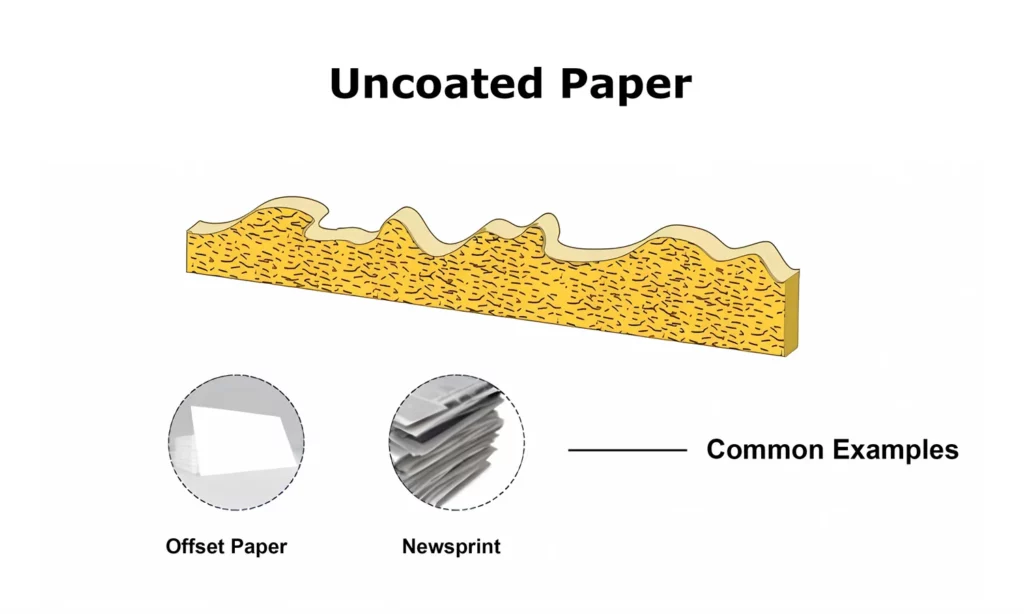
What is Uncoated Paper?
Uncoated paper, commonly referred to as non-coated paper, is printing paper that has not undergone coating processing. The surface of uncoated paper lacks a coating, exposing its fibers, making it relatively rough with strong ink absorption. Common examples include newsprint and offset paper. Frequently used for packaging are white kraft paper and specialty paper.
What are the Benefits of Uncoated Paper?
Uncoated paper can effectively showcase the inherent characteristics of the paper itself, preserving its original texture and expressing a rustic, primitive sense of sophistication. A good uncoated paper has even pulp distribution, with either high smoothness or natural texture, offering a pleasantly tactile experience. After printing, it exhibits subdued and natural colors without reflection, radiating a sense of sophistication. Therefore, high-quality uncoated paper is often favored by designers.
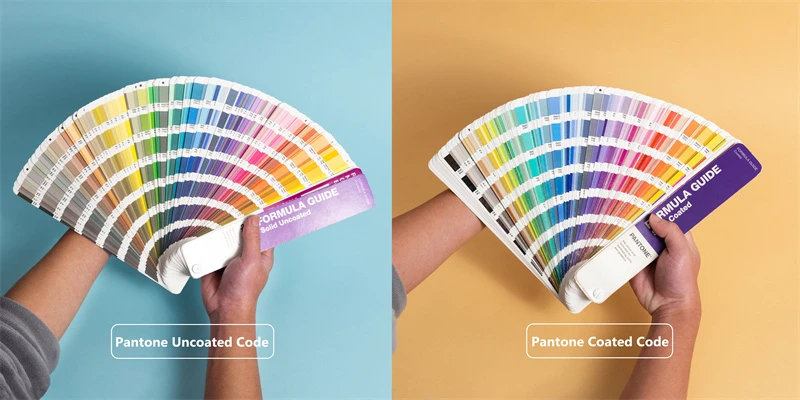
The Cons of Uncoated Paper
In order to improve its printing adaptability, adhesive techniques are applied to its surface. However, as the surface lacks a coating, the paper absorbs ink, resulting in colors that are generally subdued and less vibrant after printing. Nevertheless, this eliminates the need for additional lamination to protect the print.
There can be significant differences in color presentation between wet ink during printing and dry ink after printing. Consequently, the final product may deviate considerably from the designed colors. If using spot colors, it is advisable to refer to the Pantone uncoated code color chart for accurate color matching.
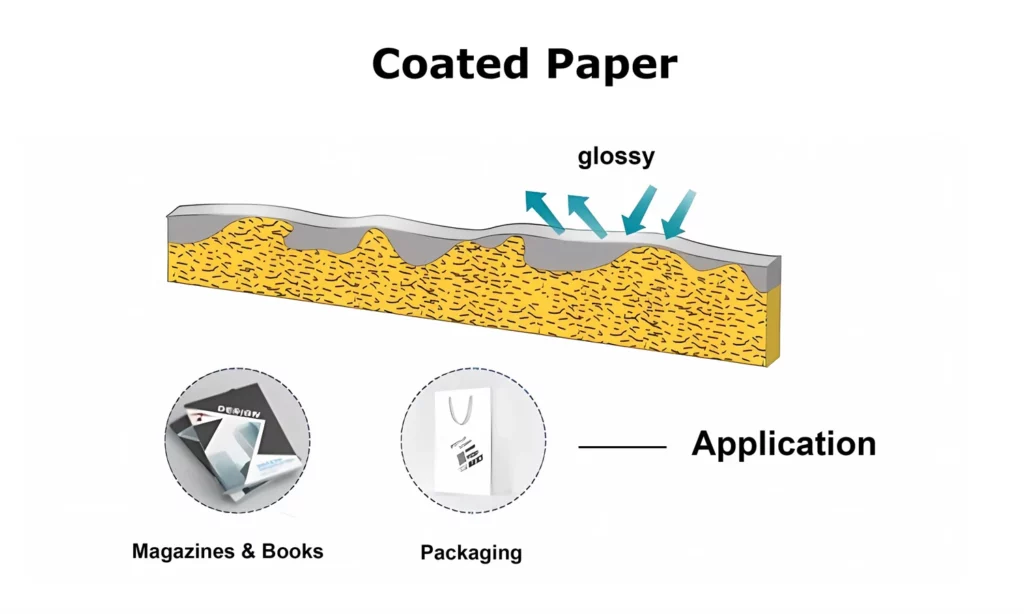
What is Coated Paper?
Coated paper involves applying a layer of coating, such as kaolin clay or calcium carbonate, onto the original paper. After drying, it undergoes a calendering process to enhance smoothness and gloss, giving the paper excellent optical properties and print adaptability.
Depending on the amount of coating, it can be categorized as heavy coating (25-30 grams), medium coating (12-15 grams), light coating (5-7 grams), and micro-coating (2-3 grams). Based on the coating method, it can be divided into off-machine coating and on-machine coating.
Commonly used coated papers for packaging include SBS C2S (Solid Bleached Sulfate Coated 2 Sides)and SBS C1S (Solid Bleached Sulfate Coated 1 Sides)
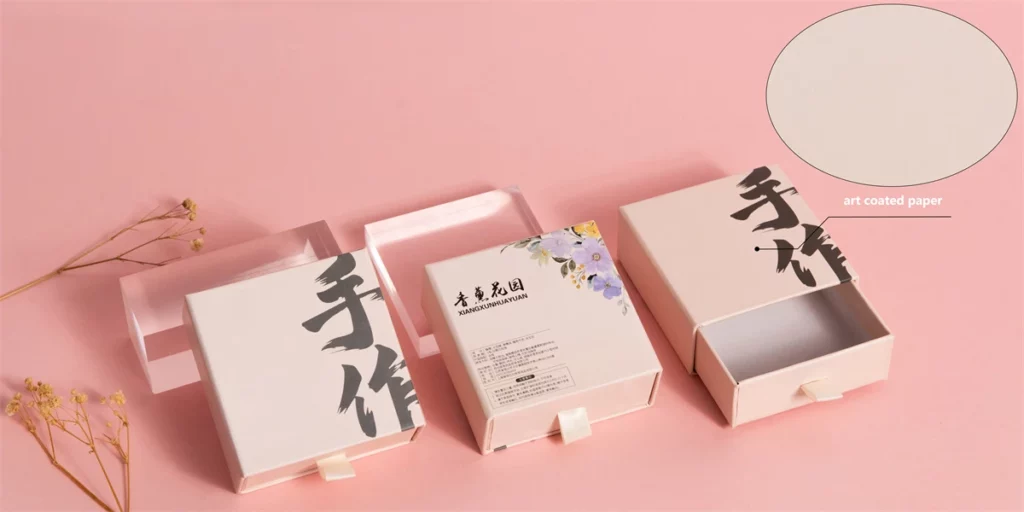
The Features of Coated Paper
The higher the coating amount, the brighter the printed image and the higher the saturation. For example, with coated paper like SBS C2S, it typically has three layers of coating, resulting in excellent four-color reproduction but sacrificing the tactile feel of the original paper surface.
When customers choose specialty paper instead of SBS C2S, it is often because they prioritize factors such as the packaging’s tactile qualities and overall feel. Therefore, more coating does not necessarily equate to better quality.
Different images and designs must be matched with different types of paper to achieve the desired overall effect. Factors such as the quality of the original paper, the quality of the coating, and the coating method can all influence the final paper quality.
A good coated paper requires high-quality original paper, with even pulp distribution and minimal apparent spotting after coating. If using original paper with a certain texture, it is important to retain its original surface texture. Additionally, a well-made coated paper should exhibit even coloring in flat areas and an absence of spots in solid printing after the printing process.
During the printing of coated paper, ink tends to settle on the surface, resulting in a vibrant printed effect. As a result, packaging produced from coated paper often requires additional laminating processes to protect the print. The color difference between the final packaging and the designed colors is minimal, especially when using spot colors, where Pantone coated code can be used as a reference.
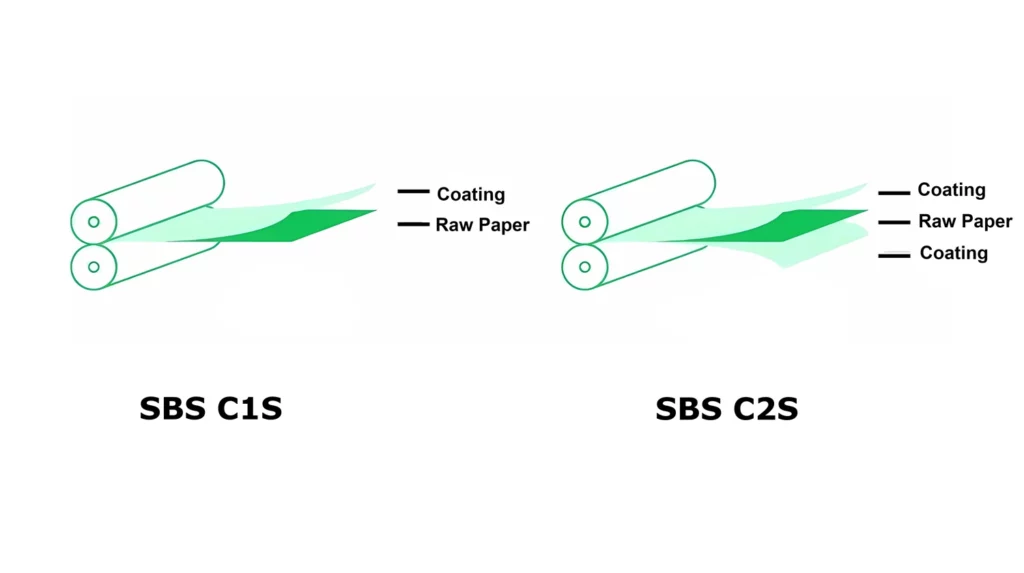
The Example of Coated Paper –SBS
SBS is a type of paper that is coated with a layer of white pulp on the original paper and then polished.
Characteristics: It has a smooth surface, high whiteness, even distribution of paper fibers, consistent thickness, low stretchability, good elasticity, strong water resistance, and tensile strength. It exhibits excellent ink absorption and acceptance.
Based on the coverage of the coating, it can be divided into single-sided coated paper (coating on one side) and double-sided coated paper (coating on both sides).
A. SBS C1S: Used for high-end printing such as paper boxes, cartons, paper bags, and pharmaceutical boxes.
B. SBS C2S: Available in weights ranging from 80 to 400 grams, suitable for high-quality printing products.
Note: When printing on SBS C2S, avoid excessive pressure, use offset resin-based inks, and glossy inks. To prevent back sticking and contamination, anti-offset agents and powder spraying methods can be employed.
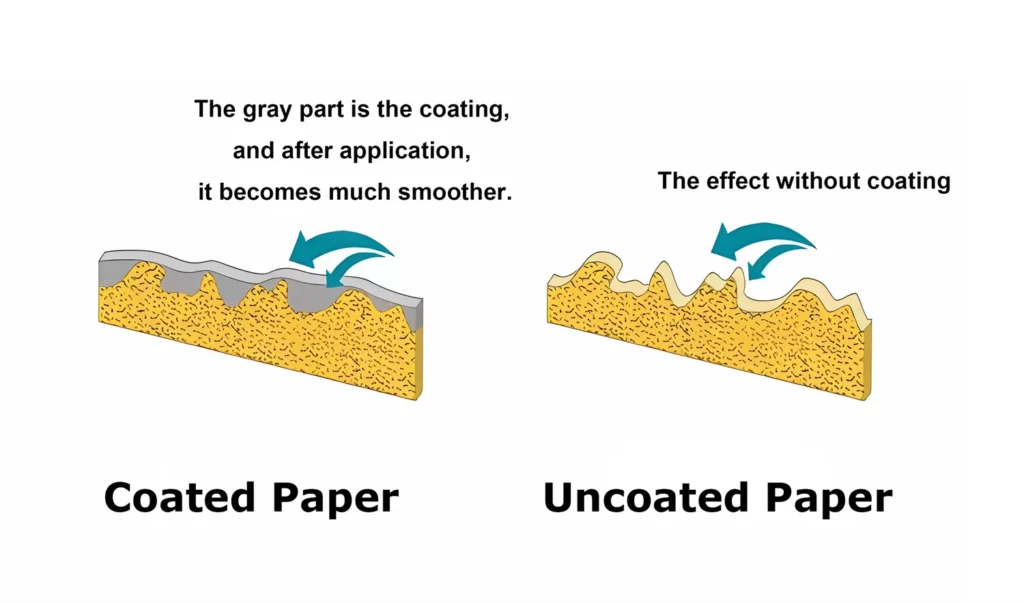
Conclusion: Uncoated and Coated Papers in Perspective
In conclusion, uncoated paper stands as a versatile option in the realm of printing materials. With its raw and textured appeal, uncoated paper brings out the innate characteristics of the paper itself. Its absorbent nature, combined with a lack of coating, gives a subdued and natural color palette after printing. Despite potential drawbacks, such as muted colors, uncoated paper remains a preferred choice for those who appreciate its tactile and authentic qualities.
In essence, the choice between uncoated and coated papers boils down to the desired aesthetic and functional outcomes. Uncoated paper, with its natural feel and subdued colors, appeals to those who prioritize tactile sensations and a more rustic appeal. Meanwhile, coated papers, like SBS, are the go-to for projects demanding high-quality, vibrant prints, even if it means sacrificing the original texture of the paper.
Ultimately, whether opting for the simplicity of uncoated paper or the glossy sophistication of coated paper, understanding the nuances of each allows for informed decisions in meeting the diverse needs of printing and packaging projects. The beauty lies in the ability to choose the right paper that complements the envisioned design and delivers the desired visual and tactile impact.
